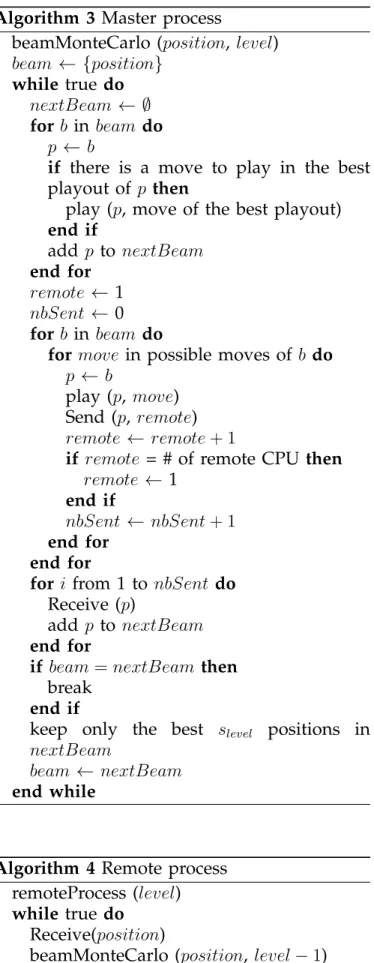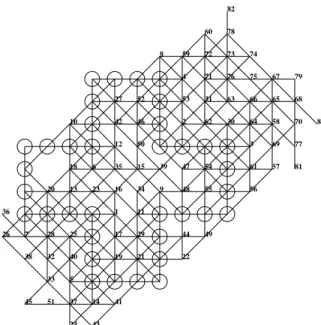Monte Carlo Beam Search
Texte intégral
Figure




Documents relatifs
We see that (i) with 30K sims/move, many versions play the semeai whenever it is useless, and all versions play it with significant probability, what is a disaster as in real
As the number of simulations grows, the frequency of the best move will dominate the others, so the mean value of this node will converge to the maximum value of all its moves, and
Once it leaves the Monte Carlo Tree, the roll-out phase generates the remaining moves according to the roll-out policy until the game reaches a final state.. The update phase
Given the simulations are expensive, the problem is here considered determinis- tic (no noise in the initial state nor in the chosen action)... a) Setup of the acrobot problem.
Table 8 gives the time of the parallel algorithm for various numbers of slaves, with random slaves and various fixed playout times.. random evaluation when the fixed playout time
The main contribution of the paper is the Mosaic AutoML platform, adapting and extend- ing the Monte-Carlo Tree Search setting to tackle the structured optimization problem of
Monte Carlo Tree Search (MCTS) [5] is a recent algorithm for taking decisions in a discrete, observable, uncertain environment with finite horizon that can be described as
In order to compare MLDS values with scores obtained from an IQA algorithm, we computed the score provided by the IQA algorithm between consecutive pairs of compressed images